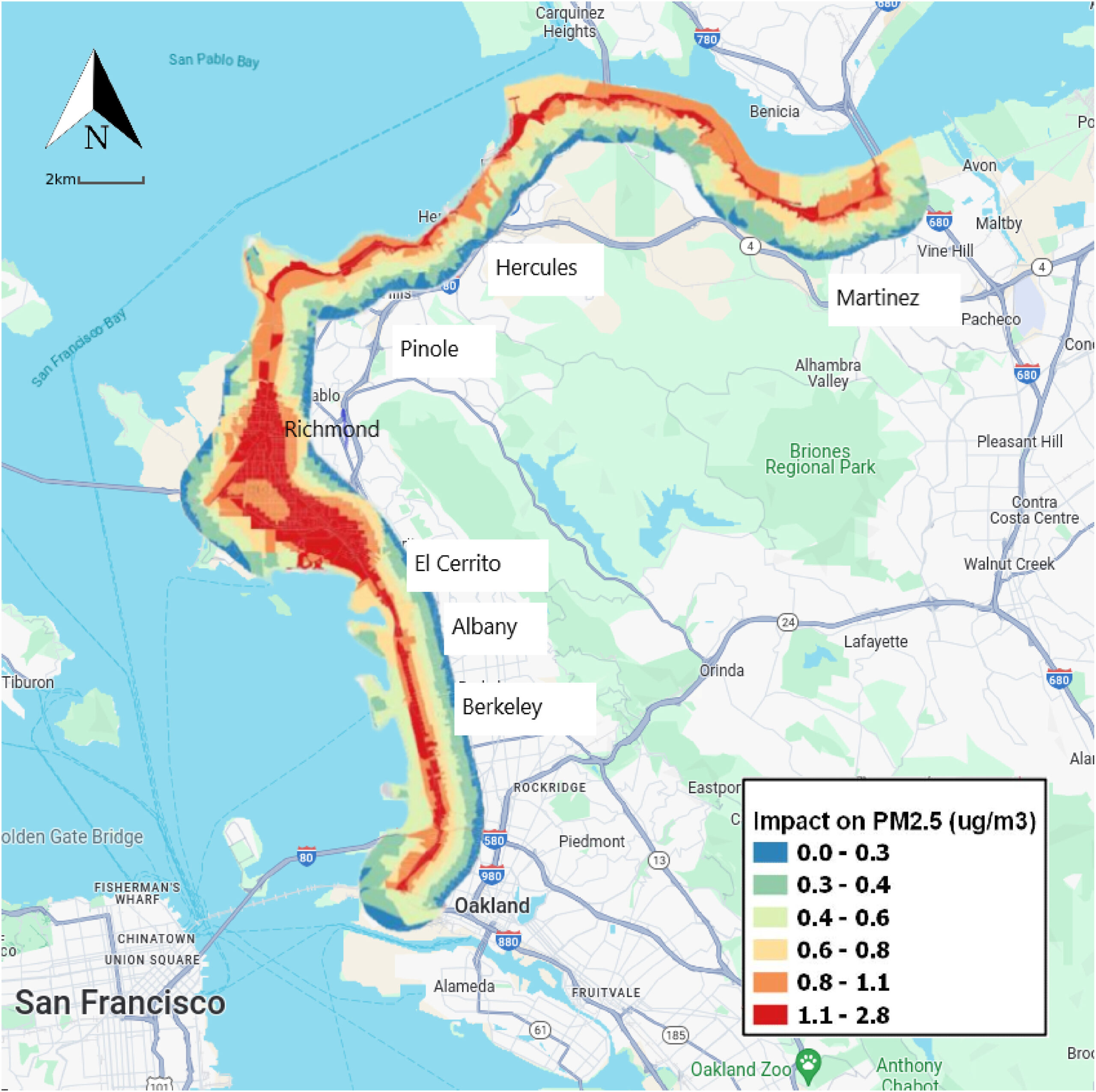New study: Oakland coal terminal would bring asthma, heart disease, hospitalization, and death
A new study describing health impacts of PM2.5 from coal trains in the San Francisco Bay Area – that is, small particulate matter from coal dust routinely spilled from trains transporting coal – was posted on April 18, 2024 in the peer-reviewed journal Environmental Research.
As summarized in a press release from UC Davis, where lead author Dr. Bart Ostro is an epidemiologist with the Air Quality Research Center, “Trains carrying loads of coal bring with them higher rates of asthma, heart disease, hospitalization and death for residents living nearest the rail lines.”
A copy of the study, Health impact assessment of PM2.5 from uncovered coal trains in the San Francisco Bay Area: Implications for global exposures, is posted on the NCIO website, and is available to all directly from the publisher, via ScienceDirect.
The study focuses on trains transporting coal through East Bay neighborhoods, as did prior studies led by Dr. Ostro and reported by NCIO: the first showing that coal trains add significantly more toxic particulate matter to the atmosphere along their route; and a later, fuller report and literature review about the health impacts of PM2.5. The current paper sharpens and broadens focus on health implications of rail transport of coal, explaining for context that “nearly 70% of all coal is transported by rail in the US, and this transport constitutes 14% of all rail freight activity.”
The new paper’s findings of impact on East Bay neighborhoods are predicated on evidence collected along the route of trains currently hauling coal to Richmond’s Levin terminal, and the paper’s estimates of “the annual number of coal trains that would pass the study population” based on a proposal developed by Phil Tagami and Jeff Bridges in 2015 – the very proposal that No Coal in Oakland has been fighting ever since. Tagami’s proposal envisions a nightmare scenario in which “up to 10 million tons of sub-bituminous coal” would be shipped annually “from Utah mines to a proposed export terminal in Oakland, CA.” The UC Davis Press Release summarizes the paper’s principal findings as follows:
To quantify the health impacts of PM2.5 emitted from passing coal trains, the study authors integrated air quality data with medical and demographic information using software mapping and analysis programs. They ran different scenarios for increases in PM2.5 for the roughly 262,000 people who would be exposed.
They found that, under the most severe scenario — an increase in annual fine particulates of 2.1 micrograms per cubic meter of air — six additional people would be expected to die each year among this population.
When the authors adjusted the analysis to incorporate the higher risks for people of color, an estimated 15 total deaths were possible.
The study results also suggested:
- 28 additional hospital admissions for heart disease.
- 22 new cases of asthma.
- 17 additional cases of pneumonia.
- 58,000 additional days of asthma attributable to coal train transit.
Several of these outcomes represent a 3 to 6% increase over current levels.
In the paper’s Discussion section, the authors explain why “the impacts in this assessment are likely underestimated.”
Importantly, the implications of the paper’s findings extend far beyond the East Bay. The paper acknowledges the geographical scope of its data, shown on the map at the head of this article, but at the same time explains the far broader implications of its findings: “Although this is a relatively small population, it is a microcosm of what likely occurs to millions of urban dwellers throughout the world as uncovered coal trains traverse the globe delivering coal to power plants and export terminals.”
If a coal terminal were built in Oakland, a map showing impacts of coal trains in the East Bay would change significantly from the one published in the new paper: the most severe impact (red on the map) would swell deep into the West Oakland neighborhood adjacent to the West Gateway, likely far more extensively than the current map shows adjacent to the Levin terminal in Richmond. Coal is currently being transported to the Levin terminal in significantly smaller quantities than would be transported through the proposed Oakland Bulk and Oversize Terminal (OBOT).
As lead author Dr. Ostro puts it, “These trains run all over the world, exposing the poorest populations who often live close to the train tracks. As a result, these impacts have local and global implications.”
Image credit: “Fig. 1. Study Area with Estimated PM2.5 Concentrations associated with 2.1 μg/m3 Increase in the Peak of the Annual Average Increment,” from Health impact assessment of PM2.5 from uncovered coal trains in the San Francisco Bay Area: Implications for global exposures, Environmental Research v252 Part 1. https://doi.org/10.1016/j.envres.2024.118787
